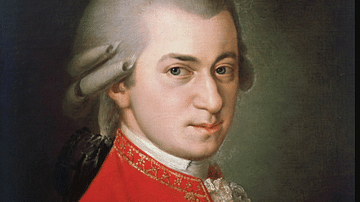
Aria (or Areia) was always understood to be the area around the Areios River, today Hari Rud in Afghanistan (Arrian, Anabasis IV.6.6). It was bounded to the north by Margiana and Bactria, where the area of the Margos River begins; to the west by the big Carmanian desert; to the south by Drangiana; and to the east by the mighty Paropamisadai mountains. The Areios was the backbone of the region, flowing across the land: Aria corresponds almost exactly to the modern province of Herat, which shows the importance of the river throughout history.
The productive part of Aria was a rather narrow stretch of land that is some 150 km along both banks of the Areios. At no point along its route was the valley more than 25 km wide, even if some lakes are mentioned in the Avesta (Vendidad, Fargard I.9). Nevertheless, strongly linked to its river, the area was known to be fertile and to produce some of the best wines in the world. Its capital was Alexandria of Aria (modern Herat), the ancient Artacoana. The land was divided, according to Ptolemy (VI.17) between the area near of the river, inhabited by settled Arians in towns and villages, and the nomadic tribes in the surrounding mountains and deserts. Ptolemy listed many towns, confirming the idea that the area was powerful at this time.
History
Its population was divided between settled people in the numerous towns of the plain and the nomads of the deserts and mountains. Its history reproduced the same outline between Persians, Greeks, Parthians and Sakas. Although little is known of early Aria, the area became a Persian satrapy when it was conquered by Cyrus the Great. Artacoana (modern Herat) became the capital of the region. Aria was, at this time, an important part of the Achaemenid Empire (c. 550-330 BCE), and Strabo (XI.10.1) even relates that Drangiana was an administrative part of Aria. It seems that Arians were strongly influenced by northern Scythian peoples, as it is possible to see representations of Arians in Achaemenid art at Susa and Persepolis.
When Alexander the Great invaded Central Asia, he arrived in Aria in 330 BCE and was received by the satrap of the area, called Satibarzanes. Arrian (Anabasis III. 25) tells us that the satrap betrayed Alexander, so the Macedonian was forced to besiege Artacoana. Alexander used siege towers to take Artacoana and captured the city; the inhabitants were killed or sold as slaves. The empty town was rebuilt and called Alexandria. Aria was one of the easternmost parts of the Seleucid Empire (312-63 BCE) but was, at least in part, conceded to Chandragupta Maurya after the war between this Indian king and Seleucus I Nicator in 303 BC (Strabo XV.2-9).
When Diodotos made Bactria independent in 250 BCE, Aria became, nevertheless, quickly conquered and administered by the Greco-Bactrian kings. The only battle we know from Greco-Bactrian kings was fought in Aria, between Antiochos III and Euthydemos, during which Euthydemos' cataphracts were crushed by the Seuleucid's cavalry (Polybius, "Histories", X.27-31). Sources are scarce, but the area seems to have remained under Greek control until Parthia invaded the Greco-Bactrian lands in the 140s BCE. In the following decades, groups of Sakas, that were pushed by the northern Yuezhei, began to settle in the area. To what extent those Sakas controlled Aria we do not know, but it seems that the area continued being more or less as a dependancy of the Parthians through most of their history since Mithridates, and then under Kushan rule.







